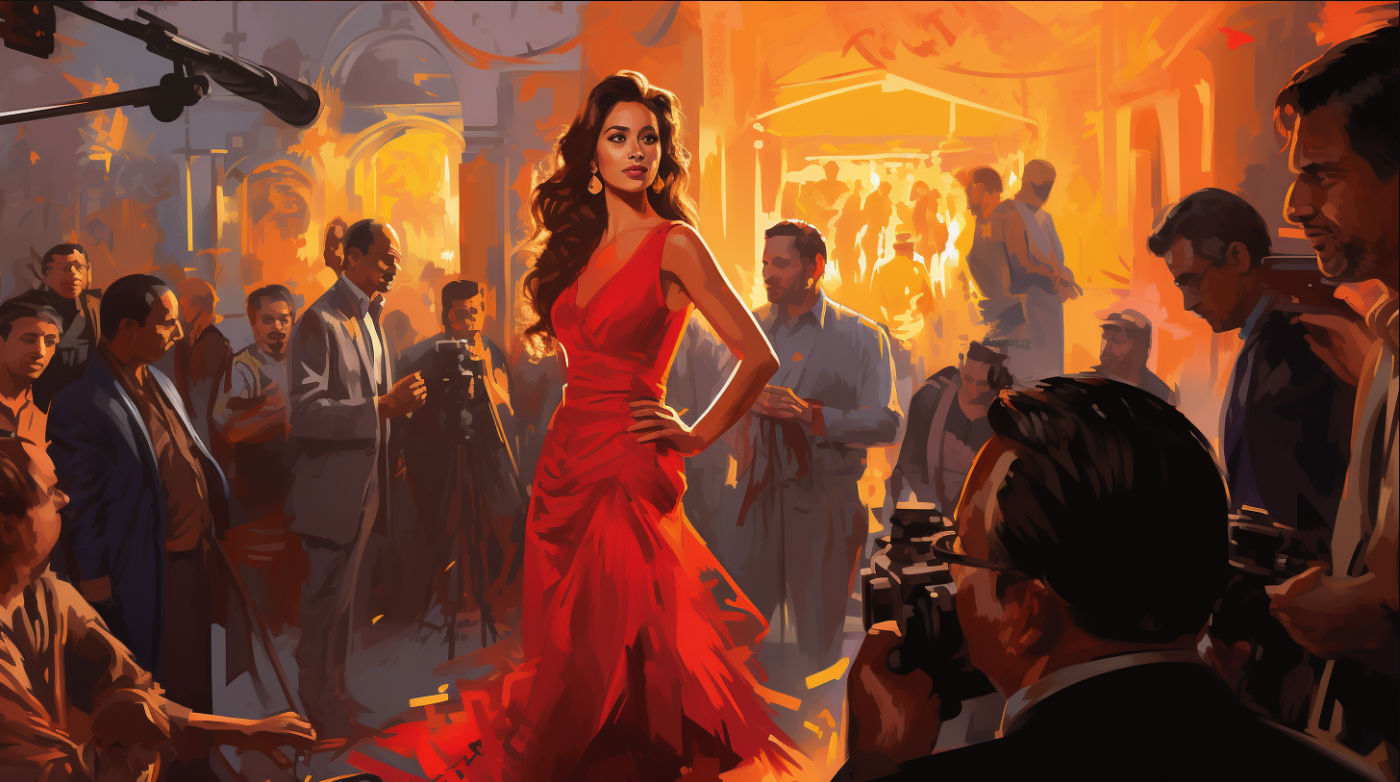Spaces Available for Women on Bollywood’s “Big Screen”
Bollywood’s treatment of women has always been a subject of debate, with discussions surrounding the misogynistic representations and limited participation of women. The camera, which is at the centre of this whole industry, has often been subsumed under the male gaze as the major authorial roles behind the screen are still dominated by men.
From production to directorial to the actual wielding of the camera, it has largely been seen as the male prerogative where women’s narratives still occupy niche spaces and witness limited visibility and monetary traction. Statistics reveal a stark gender imbalance, with only one in ten directors being female and a ratio of more than six males for every female in the industry.
On screen, 72% of characters are played by male actors. This translates into monetary discrimination: various Bollywood actresses have spoken about the pay gap between them and their male counterparts. This stems from India's patriarchal structure that consistently places women on the lower rung compared to men. Such inequality is reflected on the big screen as well, where women’s space is often restrictive and highly gendered.
Party aur Pathaan ka waqt aa gaya hai! #Pathaan in cinemas now! Have you booked your tickets yet? https://t.co/SD17p6x9HI | https://t.co/VkhFng6vBj
— Yash Raj Films (@yrf) January 25, 2023
Celebrate #Pathaan with #YRF50 only at a big screen near you, in Hindi, Tamil and Telugu. #PathaanInCinemasNow pic.twitter.com/ujikKCvZHL
While the content of upcoming OTT (over-the-top online) platforms offers a more nuanced representation of women, the “big screen” is still dominated by a flamboyant male presence. These movies, featuring big names, action scenes, and larger-than-life heroism, strive to depict the heroic actions of their male leads through fast-paced sequences, energetic fighting, and multi-dimensional spectacles. For instance, the big blockbusters of Shahrukh Khan, like Pathan or Jawan, depict the hero flying off buildings, undertaking improbable challenges, and delivering epic-scale dialogues to match this fervour.
Based on research from Oxfam India, female characters held only 23% of lead roles in Indian cinema. Women frequently appear in romantic roles, as co-leads or love interests in 76.7% of films, and are often depicted seeking revenge or retribution against violence in around two-thirds of them. Consequently, the role of the heroine is overshadowed, often reduced to complementing the hero's larger-than-life persona by emphasising her feminine traits. In such scenarios, she is often positioned, metaphorically and literally, behind the hero.
Despite featuring in these action sequences, the women maintain the decorum of “nazakat” (the Urdu word for feminine delicacy and elegance) with their prim and proper dress up and quintessentially feminine action. In contrast, this means their actions cannot be that large or free as neither their clothes nor propriety allow them to have expanded movements. Furthermore, women are often secondary characters, primarily supporting or enabling the progression of men's storylines. In such cases, the women’s role is to facilitate men’s journey.
Apart from their physical movements, women's public and social spaces are also guided by gender norms. They mostly inhabit the fantastical or domestic realm, commonly appearing in scenes serving as comic relief, dream sequences, romanticised songs, or moments of domestic bliss for the hero. Their existence is almost superfluous to the serious concerns of the world, as their roles revolve around men in their lives.
Even in romantic plots, women are often sidelined. In what are considered progressive love stories, such as "Satyaprem ki Katha" and "Dream Girl 2," women serve as catalysts in the hero’s journey towards self-improvement and self-awareness. Despite their importance to the hero's development, their on-screen presence remains secondary, merely serving as symbolic elements while the narrative primarily explores the hero's humanity.
To conclude, the cinematic space of Bollywood is still largely marked by a prominent male presence and a gender bias against women. Although there are exceptions in the form of some female-centric narratives, these get less blockbuster success than the movies with big hero names do. This could be a co-relation to the fact that 57% of regular cinema-goers are men.
It is significant that the norm be altered and more mainstream movies move towards equal gender representation. This would then lead to socio-economic improvement behind the scenes as well. While it would be erroneous to assert that this problem is limited to Bollywood itself (Hollywood and other cinemas are plagued by similar issues), it is important that we as an audience recognise this issue, irrespective of the cinema to which we are attached. We should encourage movies with more equal gender representation.
Meet the newest couple in the Dharma cinematic universe – Rocky & Rani!❤️👑
— Dharma Productions (@DharmaMovies) May 25, 2023
Inn dono ki prem kahaani hai adhuri without their family!
STAY TUNED & MEET THEIR PARIVAAR!#RockyAurRaniKiiPremKahaani, a film by Karan Johar in his 25th anniversary year.
In cinemas 28th July, 2023 pic.twitter.com/A2Ii9U3kr3
In the end, however, I would like to commend a recent movie: Rocky Aur Rani Kii Prem Kahaani (Rocky and Rani’s Love Story). In the packaging of a typical Bollywood drama, the movie portrays both the hero and the heroine as worthy of the audience’s attention. Despite having an over-the-top hero, the movie manages to carve out a distinct space for the heroine and her actions. Their mutual journey towards love, family, and cultural acceptance is presented in the film. The title itself hints at the equality of space allotted to the two characters (despite their differences), unlike its predecessors explored in this article.
When we give visibility and appreciation to women’s narratives, we can hope to bring about a systematic transformation, foster equality within cinema, and dismantle its imbalanced gendered power structures.
Additional Resources:
Oxfam India’s study on the Impact of Indian Cinema on Young Viewers: Responses to Gender and Violence Against Women.
Research by Tata Institute of Social Sciences, Mumbai on Lights, Camera and Time for Action (Recasting Gender Equality Compliant Hindi Cinema).




